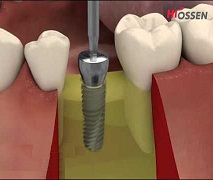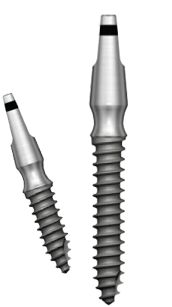October 3, 2018

Adequate bone support is one of the premier concerns of all clinicians performing dental implants. After all, if there’s not enough bone, it may disrupt proper osseointegration between it and the dental implant. A narrow dental ridge presents a serious challenge for clinicians seeking to provide patients with successful placement of implants. When a patient has a narrow ridge, many clinicians turn to surgical options to augment the size of the bone’s crest.
A better, more straight-forward option is now on the table. A narrow body implant — such as the MS Hiossen® Implant system — is specifically designed for narrow ridge applications and allows patients to have a simpler option that involves less potential pain and discomfort than additional surgeries. Let’s look at some of the difficulties clinicians face with a narrow ridge application and how the MS Implant system is the best tool for the job.
 The dental ridge is one of two jaw ridges — on the roof and bottom of the mouth — that contain the sockets of the teeth. When dental implants are placed, clinicians are encouraged to leave one to one and a half millimeters of bone remaining on both aspects of the implant. Many experts believe that this strategy will ensure a more successful outcome.
The dental ridge is one of two jaw ridges — on the roof and bottom of the mouth — that contain the sockets of the teeth. When dental implants are placed, clinicians are encouraged to leave one to one and a half millimeters of bone remaining on both aspects of the implant. Many experts believe that this strategy will ensure a more successful outcome.
A dental ridge would have to be approximately six millimeters wide to assure that gap. When the dental ridge is smaller than six millimeters, it’s considered narrow, which presents limitations on the clinician because there is inadequate ridge for standard implant systems.
Some surgical procedures can be used to increase the size of the ridge. They include guided bone regeneration, bone block grafting, ridge splitting for bone expansion and distraction osteogenesis. However, each of these options is accompanied by potential drawbacks, including:
That’s why the best choice available to clinicians seeking to perform a successful narrow ridge application may be the use of smaller dental implants designed to work in narrow spaces, like Hiossen’s MS Implant system.
A narrow ridge is not the optimal environment for a dental implant, and it presents many challenges to the clinician performing the procedure. However, it doesn’t mean that the implantation process is impossible. The MS Implant system from Hiossen Implants is specifically designed to navigate narrow spaces, such as the mandibular anterior jaw.
When you utilize the MS Implant system, you can expect many benefits from both a basic implant perspective and specifically as it relates to working in narrow spaces:
No patient should be excluded from the many benefits dental implants can provide just because of narrow ridges. Contact Hiossen Implants to find out more about the specially designed MS Implant system. You can also find a sales representative near you who will be happy to answer all your questions.